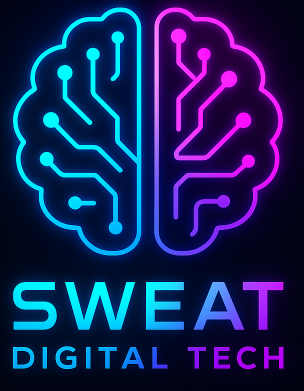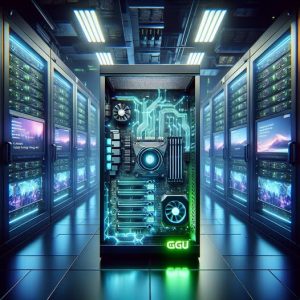Ever felt like you’re drowning in content creation? Like you’re constantly churning out videos, but they’re just… meh? Let’s face it: AI is the hype right now, and it can be genuinely helpful. Today, we’re going to break down how to make your first AI video – without needing a PhD in computer science. I recently used this combo myself, and the results were surprisingly good, and it was fun to build it!
What’s the Big Deal with blotato and n8n?
So, what are blotato and n8n, anyway? Let’s start with the basics.
- blotato: Think of blotato as your AI video generator. You feed it prompts (text descriptions), and it spits out video clips. It’s built on Stable Diffusion and is focused on short, visually interesting content. It’s not designed to create a full-length movie (yet!), but for social media snippets, explainers, or anything that needs a dash of visual flair, it’s fantastic.
- n8n: This is where things get interesting. n8n is a no-code automation platform. Essentially, it lets you connect different apps and services together. Think of it as the glue that will link your blotato creations to wherever you want them to live – your YouTube channel, social media, a shared folder, whatever. It’s powerful, even for IT Infrastructure Engineers like me. I’m used to scripting complex workflows in PowerShell or Python, but n8n lets me do it visually. It’s a massive time-saver!
Why Automate Your AI Video Creation?
You might be thinking, “Why not just manually generate videos in blotato and upload them?” And you could. But imagine automating the whole process! Let’s say you want to create a series of short videos based on a blog post. You could set up an n8n workflow that:
- Reads the latest blog post title.
- Uses that title to generate a blotato video.
- Automatically uploads that video to your YouTube channel (or a designated folder).
Boom. Done. No more tedious manual uploads! It’s a game-changer for content consistency, especially if you’re managing multiple platforms. And for those of us who administer Windows Servers or Linux Servers, this kind of automation is in our blood! I spent years writing shell scripts just to manage backups; n8n is infinitely more approachable.
Getting Started: Setting Up blotato
First things first, you need to get your hands on blotato. You can find it here: https://blotato.com/ It runs on a cloud infrastructure and offers various subscription tiers. The free tier is great for testing the waters, but you’ll quickly want to upgrade if you’re serious about creating a steady stream of content. A little heads up: it’s utilizing cloud providers, so make sure your IT infrastructure can handle the volume of data it generates. It’s similar to managing Kubernetes clusters, really.
Here’s a quick checklist:
- Create an account: Easy peasy.
- Understand the prompt structure: blotato’s effectiveness relies heavily on well-crafted prompts. Experiment! Try different keywords, art styles, and aspect ratios.
- Explore the styles: blotato offers a ton of preset styles. Browse through them to see what inspires you.
Images created with LeonardoAi and Video Created with Blotato
Connecting the Dots: n8n and blotato Integration
Now for the fun part – connecting blotato to n8n. This is where things start to feel like real automation magic. The good news? blotato offers a dedicated API, which makes integration surprisingly straightforward.
- Create an n8n account: Go to https://n8n.io/ and sign up. They also have a self-hosted option if you’ve got your own server infrastructure (great for those of us used to managing our own environments!).
- Install the blotato API node: In n8n, go to the node store and search for “blotato.” Install the official blotato API node.
- Configure the node: You’ll need your blotato API key (find this in your blotato account settings). Enter that into the node configuration.
- Craft your workflow: This is where you define the sequence of actions. A simple workflow might look like this:
- Trigger: A schedule (e.g., run every day at 9 AM) or a webhook triggered by a new blog post.
- Function: Use an HTTP node to retrieve data (like a blog title).
- blotato API Node: Use the retrieved data as a prompt for blotato.
- HTTP Node: Upload the generated video to your desired platform (YouTube, Vimeo, etc.).
Pro-Tips for Automation Success (From a DevOps Guy)
- Error Handling is Your Friend: Implement error handling in your n8n workflows. What happens if blotato fails to generate a video? You don’t want your entire workflow to crash. Catch those errors and log them!
- Logging is Critical: Log everything! This will help you troubleshoot issues and track performance. n8n has built-in logging, but consider sending logs to a centralized logging system (like Elasticsearch).
- Version Control: Treat your n8n workflows like code. Use a version control system (like Git) to track changes and collaborate with others.
Example Workflow: Blog Post to YouTube Video
Let’s solidify this with a more concrete example: automating a YouTube video creation from a new blog post.
- Trigger: RSS Feed trigger – monitors your blog’s RSS feed for new posts.
- Function: Extracts the blog post title from the RSS feed item.
- blotato API Node: Uses the blog post title as the prompt for blotato. You can also add parameters like aspect ratio and style here.
- YouTube API Node: Uploads the generated video to your YouTube channel, using the blog post title as the video title and description.
That’s it! Now, whenever you publish a new blog post, a video automatically appears on YouTube. Mind-blowing, right?
A Final Thought: Embrace the Future of Content Creation
AI is changing the game. It’s not about replacing creators; it’s about empowering them. By combining tools like blotato and n8n, you can streamline your workflow, experiment with new content formats, and focus on what you do best – creating awesome content! Even those of us familiar with managing complex infrastructure in Azure or AWS need to embrace the change.
“Therefore do not worry about tomorrow, for tomorrow will worry about itself. Each day has its own troubles.” – Matthew 6:34 (NKJV)




